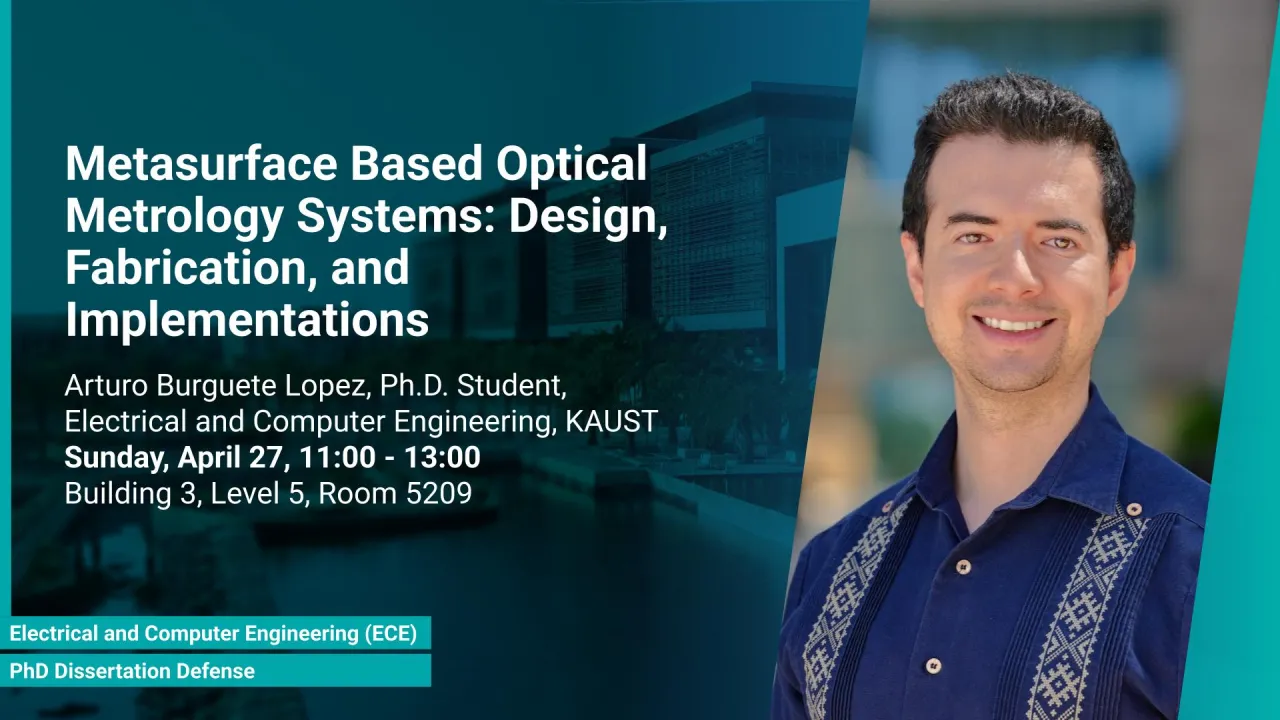
Metasurface Based Optical Metrology Systems: Design, Fabrication, and Implementations
This dissertation introduces a framework to advance optical metasurfaces from individual components to integrated optical instruments, it presents demonstrations of metrology techniques that combine machine learning and nanophotonic technologies for remote sensing that outperform methods based on conventional optics, thus advancing the next generation of optical instrumentation.
Overview
This dissertation presents a comprehensive framework for advancing metasurface technology from individual components to fully integrated optical instruments. Motivated by the limitations of traditional bulk-material optics—which often result in large footprints, high costs, and compromised performance—this research introduces high-performance metasurfaces as a designer-defined platform to overcome these constraints. The dissertation demonstrates that inverse-designed silicon-based metasurfaces can effectively replace existing bulk material optics in visible wavelength applications, providing experimental evidence of devices performing on par with commercial optics.
The research here explores the integration of nanophotonic engineering with machine learning to advance metrology techniques. As a demonstration, the dissertation introduces a bio-imaging method that employs a nanostructured surface to manipulate biological cells into thin films, enabling high-throughput measurements of their biophysical properties through the algorithmic analysis of their structural coloration.
Further expanding this research, the dissertation introduces Hyplex™, a general-purpose metasurface-based instrument that functions as a hyperspectral camera. By harnessing optical information processing with metasurfaces, Hyplex™ surpasses the traditional limitations of resolution, size, speed, and cost of conventional hyperspectral cameras. Experimental validation proves the system's capabilities in terrain classification, spectral signature-based object tracking, and real-time material segmentation.
The techniques, methods, and results presented in this dissertation lay the foundation for a generation of integrated optical tools based on metasurface technology. This work bridges the gap between academic research and industrial applications, unlocking research opportunities that drive the evolution of metasurfaces as the cornerstone of modern optical instrumentation.
Presenters
Brief Biography
Arturo is a Ph.D. candidate in Electrical and Computer Engineering at the Computer, Electrical and Mathematical Sciences and Engineering (CEMSE) Division of King Abdullah University of Science and Technology (KAUST). Following his participation in the KAUST's 2017 Photonics Summer Camp, he started his graduate studies at KAUST in August 2018. Prior to his graduate studies he earned B.Sc. in Engineering Physics from Instituto Tecnológico y de Estudios Superiores de Monterrey (Mexico) in 2017, and conducted a research intership in the Nuclear Sciences Institute (ICN) of the Universidad Nacional Autónoma de México in 2016.
Arturo is the co-founder of Pixeltra Inc., a startup company specializing in multidimensional imaging solutions through metasurfaces. He actively serves as a reviewer for Nature Communications, and has authored ten publications in high-impact factor journals during his Ph.D. He received the Academic Excellence award from KAUST in 2022 and 2023, and was awarded 2nd place at the 2019 Falling Walls international pitching competition.

